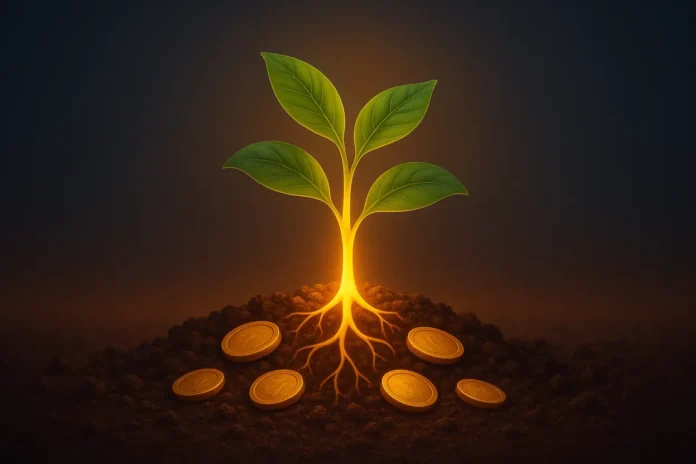Creative Customer Retention Hacks for Bootstrapped Startups
Retaining customers on a tight budget requires creativity, not deep pockets. This article compiles proven strategies from industry experts who have successfully built loyal customer bases without massive marketing budgets. From building trust through transparency to transforming customers into brand advocates, these sixteen practical tactics will help bootstrapped startups keep their customers coming back.
- Embed Yourself Into Their Growth Journey
- Send Personal Video Follow-Ups After Projects
- Invite Customers Into a Private Circle
- Turn Every Customer Into a Friend
- Create a Client Advisory Board
- Treat Every Customer Like Your Only One
- Transform Users Into Co-Conspirators With Councils
- Share Behind the Scenes for Insider Access
- Recognize Customers Through Personalized Gestures and Communication
- Over-Communicate Mistakes With Complete Detail
- Focus on Visible Value and Full Transparency
- Check In Often and Show You Care
- Design Empathetic Onboarding With Drip Emails
- Stick to Core Values and Build Trust
- Establish an Online Community Around Your Brand
- Leverage Reviews and Social Proof Early
Embed Yourself Into Their Growth Journey
In the early days, we didn’t have the luxury of big marketing budgets or fancy customer acquisition campaigns. Every client mattered, and retention wasn’t just a metric — it was survival. One of the most creative ways we retained our early customers was by deeply embedding ourselves into their growth journey. Instead of treating them as clients, we treated them as collaborators.
I remember one of our first clients — a small eCommerce brand — had just trusted us to handle their automation workflows. Halfway through the project, they hit a rough patch with declining sales. Technically, it wasn’t our responsibility to fix that, but I knew if they failed, we’d fail too. So, I sat with them to audit their customer journey, offered insights on improving their email segmentation, and even helped rewrite parts of their campaign copy. It wasn’t part of our original contract, but it showed that we genuinely cared about their success, not just the invoice.
That experience taught me something powerful: loyalty isn’t earned through discounts or loyalty programs — it’s earned through shared wins. When a customer feels that you’re invested in their success, they stop seeing you as a vendor and start seeing you as a partner.
Over time, that approach became a quiet but consistent driver of growth for us. Those early clients referred others, stayed longer, and became our best advocates. Even now, I tell founders that customer retention starts with trust, and trust is built through small, genuine acts of service.
My advice to anyone bootstrapping is this: don’t underestimate the impact of over-delivering when it matters most. When you’re small, your advantage isn’t your budget — it’s your ability to be human, responsive, and deeply connected to your customer’s goals. The early relationships you nurture that way become the foundation of your brand’s long-term reputation and stability.
Send Personal Video Follow-Ups After Projects
When money was tight, I leaned on personal follow-ups instead of big campaigns. After each project, I sent clients a short Loom video showing their results, what worked well, and what we could try next. It only took a few minutes, but it boosted retention by about 30%. It wasn’t fancy or automated, just honest. That helped build trust fast because people could see I cared about their outcomes.
This simple habit brought in more referrals and repeat work without spending more on ads, so it kept cash flow steady long enough for me to grow. I’ve noticed many small businesses make retention complicated, but people stay when they feel you’re genuinely invested in them.
My advice is to keep it personal, especially when you’re bootstrapping. Talk openly about what’s working and what’s not because that honesty builds loyalty. If you stay consistent and focus on helping your clients win, they’ll stick around even when results change.

Invite Customers Into a Private Circle
When we were bootstrapping, one creative retention tactic that worked wonders was building a private “client circle” Slack group. We invited early customers into this channel not just for support, but to give them insider access to features, previews, and direct input on our roadmap. It made them feel invested, not just serviced.
This approach created natural brand advocates. Clients started referring us unprompted, and our retention rate in the first 12 months was over 85%. The trust we built early on became a compounding growth engine.
My advice: customer loyalty starts with inclusion. When clients feel like collaborators, not just buyers, they stick around — and they bring others with them.

Turn Every Customer Into a Friend
In the early days, when we couldn’t afford fancy marketing, we focused on turning every customer into a friend. Literally. I made it a rule to personally email every new buyer within a day — not a template, just a quick note asking what brought them to us and how their experience was going.
Sometimes they didn’t reply. But when they did, those conversations turned into gold. We learned what they cared about, what frustrated them, and how they actually used our product. We’d send small thank-you gifts, or early access to updates, just to show we were listening. One customer even became a brand advocate and brought in five others by word of mouth.
That retention strategy didn’t cost us money, only time, but it built loyalty we couldn’t have bought. The growth was slower, sure, but sturdier. My advice: in the beginning, forget the big audience and focus on depth, not reach. When people feel seen, they don’t just buy once; they stick around. You can always scale later, but you only get one chance to make customers feel like they matter when the stakes are still small.

Create a Client Advisory Board
When we were just getting started, one of the most effective ways we kept early customers engaged was by making them part of our product story. Instead of expensive loyalty programs, we invited a group of early adopters to join our client advisory board. They got early access to new features, direct input into our roadmap, and a seat at the table to share what they actually needed from AP and AR automation. It gave them a sense of ownership — and for us, it meant real-time, high-quality feedback that shaped the product far faster than traditional research ever could.
That partnership mindset built deep loyalty. Those customers didn’t just stay — they became advocates who referred peers and vouched for our evolution because they’d seen it firsthand. My advice to other startups: make your earliest customers feel like insiders, not transactions. When they can see their fingerprints on your progress, retention becomes organic, and growth starts to build itself from trust, not just features.
Treat Every Customer Like Your Only One
Most startups pour energy into acquiring their first customers. Few spend enough time figuring out how to keep them.
In our early days, we didn’t have a marketing budget. No ad spend. No fancy funnels. Just a handful of brave clients who took a bet on us. And the way we retained them? We treated every single one like they were our only client.
Our strategy wasn’t flashy. It was personal. We gave them more care, more responsiveness, and more customization than they ever expected. After every session, we’d send detailed recaps. We followed up when we said we would. We adjusted our delivery based on their feedback. We showed up prepared, flexible, and deeply invested in their success.
And that’s what kept them coming back.
Here’s what we learned: retention doesn’t come from contracts or dashboards; it comes from trust. And trust is built in the details. When a CEO gets a follow-up email summarizing exactly what was discussed, with next steps clearly laid out, they feel like you’ve got them. When your team stays adaptable to their schedule or pivots with their changing needs, they notice.
In fact, some of our longest-running client partnerships came from that era. They didn’t stay because we were the biggest or most polished. They stayed because we listened. We cared. We made them feel seen. And those clients became our best marketing engine. The word-of-mouth referrals that came out of those relationships are still, to this day, a major source of our business.
So if you’re bootstrapping, here’s my advice: overdeliver on care, not code.
It’s not about automation or scale at that stage. It’s about showing up, being present, and proving you give a damn. That’s what turns customers into champions. And that’s how you grow when no one knows your name — by making sure the people who do will never forget how you made them feel.

Transform Users Into Co-Conspirators With Councils
When you’re bootstrapping, your product is almost certainly unfinished, buggy, or lacking features compared to established competitors. This feels like a huge disadvantage, but it’s actually your single greatest asset for retention. Larger companies are insulated from their customers by layers of support teams and product managers. You, on the other hand, are right there. Your early customers aren’t just buying a tool; they are betting on you and your vision. The key is to make them feel less like consumers and more like co-conspirators in your success.
My most effective strategy was to formalize this relationship by creating a small, informal “customer council” with my first ten users. I didn’t just ask for feedback; I invited them to help set the roadmap. We had a private channel where I’d share rough mockups and ask, “What am I missing here?” When someone reported a bug, I’d thank them for their help in building a more stable product. The critical step was closing the loop. When we shipped something based on their input, I’d message them directly and say, “That feature we talked about last month is live. Your fingerprint is on this.” This transformed their role from passive user to active builder. They weren’t just using the product; they were invested in its survival and improvement.
I remember one of our earliest customers, a small bakery owner named Sarah, who was frustrated with how our inventory tool handled bulk ingredients. Instead of just logging a feature request, I spent an hour on a call with her, screen-sharing as she walked me through her exact process. We essentially designed the solution together. When we launched the update, I sent her a personal email showing her how her specific idea was now a core part of the tool for everyone. She later told me she felt a sense of pride every time she used it. That’s when I realized loyalty isn’t bought with discounts or perfect features; it’s earned by making people feel like they belong to the story of what you’re building.

Share Behind the Scenes for Insider Access
When we were bootstrapping, we couldn’t afford fancy retention tools or big loyalty programs, so we leaned into something simple: access. We made early customers feel like insiders, not clients. Every time we wrapped a project, we’d share the “behind the scenes.” What went right, what we were improving, and even the tools we were experimenting with. That transparency made people stick around because they felt part of the process, not just the outcome.
It wasn’t about discounts or flashy offers; it was about building trust through honesty and small wins. A few of those early clients are still with us years later, and they’ve referred more business than any ad ever could. If there’s one thing I’d tell someone about customer loyalty, it’s this: don’t overcomplicate it. People remember how you made them feel seen more than any marketing campaign you’ll ever run.

Recognize Customers Through Personalized Gestures and Communication
I started a global branding and digital marketing firm 24 years ago and have worked with clients on retention strategies to offer a discount for first-time customers or “charter members/users” as an incentive or have sent % off coupons for next purchase if they refer new customers or share on social media to encourage building goodwill and momentum for the business. In my experience, there is no one catch-all way to do this, so I recommend considering thank you notes, gift certificates, tailored holiday gifts, phone calls, tickets to exclusive events. I think people really appreciate being recognized. Loyalty programs are one element of retention efforts that aim to not only keep customers but also increase their value. Companies should focus their retention efforts on the customer experience, though, not on the price. The goal is to build long-lasting relationships with the right customers who will provide the greatest returns, versus those with a high cost to serve who leave for a better deal/lower price.
Whether you are B2B or B2C, every business is P2P, and connecting on a personal level is what matters most. Successful businesses understand their product or service is about more than the transaction; they are in the relationship business. People buy brands they know, like, and trust. It is impossible to time your outreach so that you are in front of customers/clients exactly when they need your help, so try to stay in regular communication with them so that when they have a problem you can help them solve, they will think of you first. We are all in the relationship business after all. Wasn’t it Woody Allen who said 80% of success is just showing up? For my business, collaboration is key to our culture and ultimately our success. Retention starts with engagement, so to stay connected, I try to set the tone upfront with one rule: when in doubt, over-communicate, especially now that everyone is working hybrid.

Over-Communicate Mistakes With Complete Detail
The simplest and most creative way to retain early customers is to over-communicate when things go wrong. Not with canned apologies — with detail. Like, “Here’s exactly where we messed up, what it cost us, and what we’re doing about it next time.” That’s how you turn a $3,000 hiccup into a $30,000 renewal. When you’re honest before they complain, they’re 10x more likely to stick around. It feels human, but it’s actually strategic, because fixing trust is way cheaper than replacing it.

Focus on Visible Value and Full Transparency
When we were bootstrapping, one of the most effective ways we retained our early SEO clients was by focusing on visible value and transparency. We realized that in SEO, where results can take time, the biggest risk isn’t lack of performance, but lack of perceived progress. So we made our campaigns fully transparent: clear deliverables, open dashboards, and regular updates that tied every action to key marketing principles and conversions that actually mattered to the client’s business.
This approach built trust quickly, and once clients could see the impact of SEO on their bottom line, retention became effortless. Many of them started referring others not because we asked, but because they genuinely believed in what we were doing. To appreciate that loyalty, we’d surprise them with small freebies or campaign bonuses from time to time. In a service-based industry, those gestures go a long way in making clients feel valued and special.
The impact was twofold, with stronger long-term client relationships and steady organic growth through word of mouth, which turned out to be more powerful than any paid campaign.
Advice: Focus less on selling SEO or packages, and more on helping clients grow their business and experience its value. Transparency, communication, and appreciation are the real growth multipliers when budgets are tight.

Check In Often and Show You Care
I kept early customers by staying close to them and making sure they always felt supported. I checked in often, shared ideas to help them grow, and made them feel like a priority even when I was small. That led to repeat work and referrals, which became my main growth engine. My advice: show up, care, and communicate — loyalty comes from trust, not big budgets.

Design Empathetic Onboarding With Drip Emails
Having a really empathetic onboarding flow is key to improving product adoption, which is step 1. Progressive guidance via drip email is a mediator for daily usage. It is key to reducing users from going stale. Great examples from OpenPhone and Notion are really good inspirations that I took, learned, and adapted for my own startup. There, I use one email a day for the first 6 days, taking the user from their initial action on the product to educating them on what’s possible in a gradual, one-step-at-a-time manner to cultivate not only that daily return-to-product journey, but also revisits and staying top-of-mind.

Stick to Core Values and Build Trust
While it is no secret, one powerful way we’ve found to retain customers without a major marketing budget is by sticking to our core values of Being Client Focused, Going the Extra Mile, and Doing the Right Thing. There have been many instances where we have steered clients away from certain decisions that aren’t right for their business despite missing out on the work that would ensue simply because it is the right thing to do. Providing a consistent level of unbiased, client-focused advice builds trust with customers and often leads to future business, referrals, and higher retention rates. This strategy significantly accelerated our growth as satisfied clients became advocates, referring us to their network and enabling us to expand through word-of-mouth. My advice for building customer loyalty is to determine how you can offer expert-backed advice whenever it will best add value to their business.

Establish an Online Community Around Your Brand
My strategy to keep costs low and attract early customers was to build a community around my brand. I provided customers with an opportunity to interact by establishing a special online environment — a forum or social media group — where they could share their stories and give feedback. This not only helped create a sense of belonging but also made customers feel valued and heard.
This plan significantly influenced our development by turning satisfied customers into loyal brand promoters. Customer loyalty can be achieved through genuine involvement and communication. I advise others to take time to build relationships with their customers; once customers feel they are part of a community, they will be more willing to stay and recommend others. Investing in meaningful relationships will pay off handsomely, even without a huge marketing budget.

Leverage Reviews and Social Proof Early
By focusing on reviews and social proof to really prove our expertise from the outset, we found that early customers were much more “bought-in” to our brand when they could see relevant, up-to-date reviews and social proof directly from existing customers, which helped to validate our early position within the industry.




